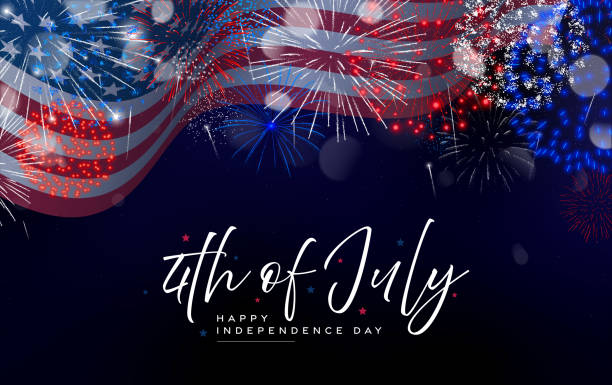The Fourth of July, also known as American Independence Day, is a federal holiday in the United States that celebrates the passage of the Declaration of Independence by the Continental Congress on July 4, 1776.
This vital announcement marked the breakaway of the 13 American colonies from British rule. In 1870, the U.S. Congress officially recognised Independence Day as a holiday for everyone without pay. Later, in 1938, it became a paid holiday.
Known as the Fourth of July, this day is celebrated throughout the United States with activities such as parades, fireworks, barbecues, concerts, and many other enjoyable events.
But do you know that when every American shows their love for their country by flying the American flag and wearing clothes in the colours of the flag, there was one such person who believed that American Independence Day should be celebrated on July 2, not July 4?
You must be wondering who. Then, read this complete article to get the answer to your curiosity. Let's get started!
Check Out| US Independence Day 2025: Federal Holiday Today and How Many Years of America Independence?
Which US President Expressed His Disapproval of Fourth of July Festivities, and Why?

Source: iStock
John Adams was a founding father and the second president of the United States, serving from 1797 to 1801. He was the only U.S. president who had a particular reason for disapproving of celebrating American Independence Day on the Fourth of July.
Adams believed that July 2, not July 4, was the actual date of American independence. On July 2, 1776, the Continental Congress voted in favour of the Lee Resolution, which declared the colonies' independence from Britain.
Although the Declaration of Independence was formally adopted on July 4, Adams felt the vote itself was the real turning point.
In a famous letter to his wife Abigail, dated July 3, 1776, he wrote, "The Second Day of July 1776, will be the most memorable Epocha in the History of America... It ought to be solemnised with Pomp and Parade, with Shews, Games, Sports, Guns, Bells, Bonfires and Illuminations…"
Because of this conviction, Adams refused to participate in Fourth of July celebrations during his lifetime, even while serving as President.
Ironically, both John Adams and Thomas Jefferson — two key figures in the founding of the nation — died on July 4, 1826, exactly 50 years after the adoption of the Declaration of Independence.
Read On| How Old is the United States in 2025? Check Key Facts About U.S Independence Day 2025
Who was John Adams?

Source: The White House
John Adams was a Founding Father and the second President of the United States, serving from 1797 to 1801. Before his presidency, he played a prominent role in the American Revolution, which ultimately led to independence from Great Britain.
During the latter part of the Revolutionary War and in the early years of the new nation, he served as a senior diplomat in Europe on behalf of the U.S. government. Additionally, Adams was the first Vice President of the United States, holding that position from 1789 to 1797.
Early Life and Education
John Adams was born on October 30, 1735, in Braintree, Massachusetts, on his family's farm. He was the eldest of three sons born to John Adams Sr, a deacon of the Congregational Church, a farmer, a cordwainer (shoemaker), and a militia lieutenant, and Susanna Boylston, who came from a prominent medical family in what is now Brookline, Massachusetts.
Adams deeply admired his father and often spoke fondly of their close bond. His ancestral roots traced back to Henry Adams, his great-great-grandfather, who emigrated from Braintree, Essex, England, to Massachusetts around 1638.
Adams's education began at age six at a local dame school, where he studied The New England Primer. He later attended Braintree Latin School, initially under the direction of Joseph Cleverly, where he was taught Latin, rhetoric, logic, and arithmetic.
When did he become the President of the United States?
John Adams became the second President of the United States on March 4, 1797. He served a single term that ended on March 4, 1801.
Before that, he was the nation's first Vice President under George Washington from 1789 to 1797. His presidency followed a hotly contested election in 1796, in which he narrowly defeated Thomas Jefferson, who, interestingly, became his Vice President due to the electoral rules of the time.
What's Next| This Day in History: What Happened Today in History – 04 July
Comments
All Comments (0)
Join the conversation